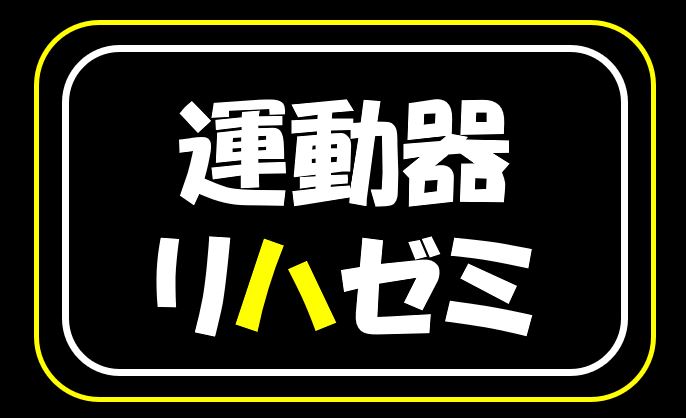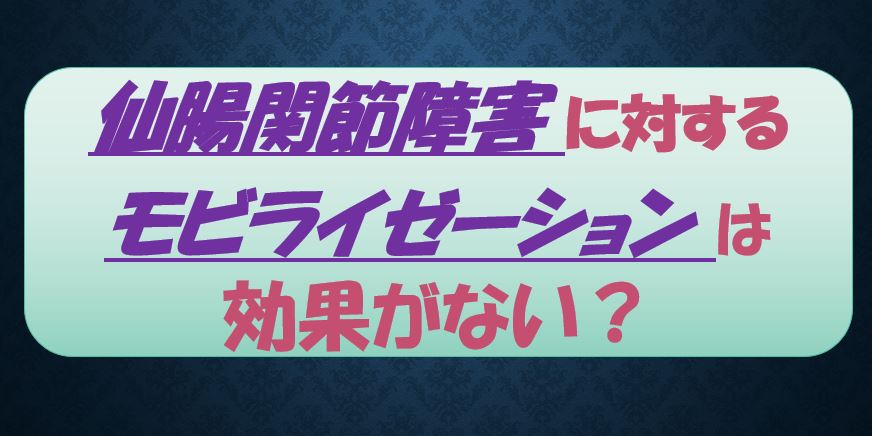こんにちは!
運動器専門のリハビリスタッフです!!
いつもお世話になります。
今回は、『仙腸関節障害に対するモビライゼーションは効果がない?』
について解説させていただきます。
仙腸関節は仙骨と腸骨で構成される関節です。
仙腸関節障害は非特異的腰痛(画像が難しい腰痛)であり、急性腰痛症(いわゆるぎっくり腰)の原因の一つです。
諸家の報告による急性腰痛症の原因としては、仙腸関節性腰痛、椎間関節性腰痛、椎間板性腰痛が多いようです。
また、仙腸関節性腰痛は慢性腰痛症の要因のひとつでもあります。
仙腸関節障害は、1905年にGoldthwaitが提唱しており、外傷や感染症などによる明らかな関節破壊を伴わない仙腸関節由来の痛みとしております。
また、MRやCT画像での仙腸関節の機能障害を示す特異的な所見を捉えることは困難(Bernard TN Jr.1991)と報告されています。
近年では、3D-CTにて仙腸関節障害を評価ができるケースもあるようです。
腰痛に占める仙腸関節性腰痛の頻度は3.5~30%との報告があるが、村上の1年間調査では504例中54例(10.7%)であった(村上.2010)とされています。
そんな中、2021年に、仙腸関節障害に対するモビライゼーションの効果について検証した論文が海外で報告されております。
この論文の検証結果が気になるところですあります。
◆論文紹介
Rev Assoc Med Bras (1992) (IF: 0.84; Q3)
. 2021 Jul;67(7):1003-1009.
doi: 10.1590/1806-9282.20210436.
Effects of mobilization treatment on sacroiliac joint dysfunction syndrome
仙腸関節機能不全症候群に対するモビライゼーション治療の効果
Nalan Dogan 1, Tugba Sahbaz 2, Demirhan Diracoglu 3
Affiliations expand
• PMID: 34817514 DOI: 10.1590/1806-9282.20210436
Free article
Abstract
Objective: This study aims to reveal the short-term effects of exercise therapy and manual therapy plus exercise therapy on pain, quality of life, and physical examination results in the treatment of sacroiliac joint dysfunction syndrome (SIJDS).
概要
目的 本研究は、仙腸関節機能不全症候群(SIJDS)の治療において、運動療法と手技療法+運動療法の痛み、QOL、身体検査結果に対する短期的効果を明らかにすることを目的としたものである。
Methods: In this study, 64 patients who were participated were divided into two groups. The first group (exercise group) was assigned with the sacroiliac joint (SIJ) home exercise program and the second group (mobilization group) with the combined SIJ manual therapy and home exercise program. Physical examination tests, visual analog scale, and SF-36 evaluation were performed at the beginning of the study, at 24 h, at 1 week, and 1 month after the treatment.
方法 本研究では、参加した64名の患者を2群に分けた。第1グループ(運動群)には仙腸関節(SIJ)在宅運動プログラムを、第2グループ(モビライゼーション群)にはSIJ手技療法と在宅運動プログラムの併用療法を割り付けた。試験開始時、24時間後、1週間後、1ヶ月後に身体検査、Visual analog scale、SF-36の評価を行った。
Results: Both groups showed that the rate of pain in the posttreatment, after the first week, and the first month; the presence of pain in the sacroiliac region; and VAS values of the patients with SIJDS compared to pretreatment values were clearly decreased (p<0.05). All tests performed in the SIJ physical examination showed significant improvement within both groups (p<0.05). However, there was no statistical difference between the two groups in 1-month period (p>0.05).
結果 両群とも、治療前と比較して、治療後、1週間後、1ヶ月後の痛みの割合、仙腸関節領域の痛みの有無、SIJDS患者のVAS値は明らかに減少していた(p<0.05)。SIJの身体検査で行われたすべての検査は、両グループ内で有意な改善を示した(p<0.05)。しかし、1ヶ月間においては、両群間に統計的な差は認められなかった(p>0.05)。
◆論文の結論
Conclusions: We found that the home exercise program and the manual therapy plus exercise program significantly improved pain intensity, quality of life, and the findings of specific tests in patients with SIJDS. In addition, superiority between the two groups in terms of pain intensity, quality of life, and specific tests was not determined.
結論 SIJDS患者において,自宅での運動プログラムと手技療法+運動プログラムは,疼痛強度,QOL,特異的検査所見を有意に改善することが明らかとなった.また,疼痛強度,QOL,特異的検査所見における両群間の優劣は判定されなかった.
◆まとめ
上記論文では仙腸関節機能不全症候群(SIJDS)64例を2群に振り分けてモビライゼーションの効果について検証しております。
運動群:仙腸関節在宅プログラム
モビライゼーション群:仙腸関節手技療法+仙腸関節在宅プログラム
介入時、介入後24時間、介入後1週間、介入後1か月にVAS(疼痛)、SF36(健康状状態調査)を評価しております。
結果として運動群、モビライゼーション群ともに介入前と比較して24時間後、1週間後、1か月後の疼痛は有意に軽減しているようです。
しかしながら、介入後1か月時点で両群間での有意な差はなかったようです。
上記論文の結果を踏まえると、仙腸関節機能不全症候群(SIJDS)に対して、仙腸関節在宅プログラムは仙腸関節に関する疼痛を改善することが明らかになっております。
しかし、運動群とモビライゼーション群での有意差がなかったことから、治療方法や評価方法など研究手法にもよるかもしれませんが、仙腸関節モビライゼーションの効果については疑問が残る結果になっております。
今回は、『仙腸関節障害に対するモビライゼーションは効果がない?』
について解説させていただきました。


![[商品価格に関しましては、リンクが作成された時点と現時点で情報が変更されている場合がございます。] [商品価格に関しましては、リンクが作成された時点と現時点で情報が変更されている場合がございます。]](https://hbb.afl.rakuten.co.jp/hgb/1f7a7439.6deab8a7.1f7a743a.315603be/?me_id=1213310&item_id=21251977&pc=https%3A%2F%2Fthumbnail.image.rakuten.co.jp%2F%400_mall%2Fbook%2Fcabinet%2F7457%2F9784524227457_1_4.jpg%3F_ex%3D240x240&s=240x240&t=picttext)


